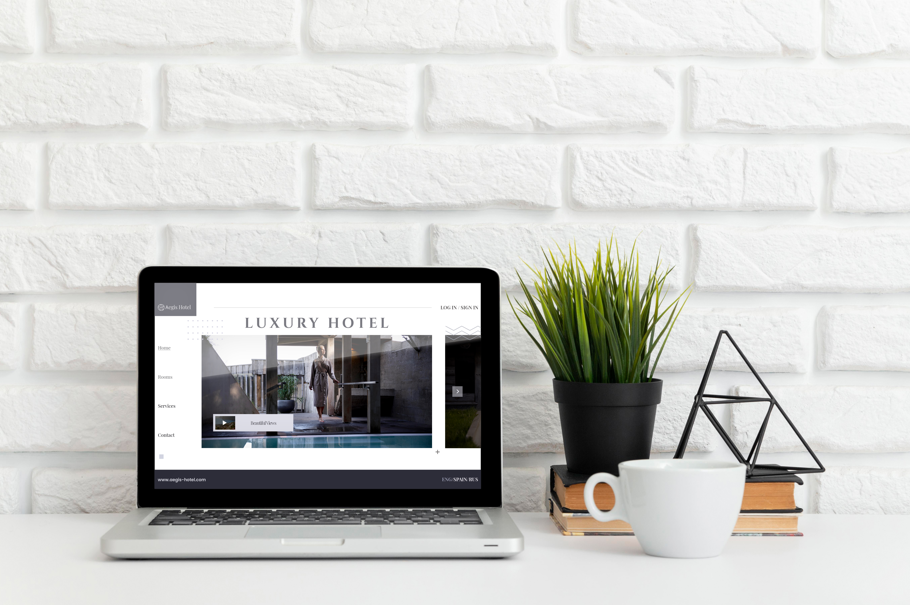How to Build a High-Converting Therapist Website
As a therapist, your website is more than just an online business card, it’s where potential clients decide if you’re the right fit for their needs. A strong therapist website builds trust, shares your expertise, and makes it easy for people to take the next step, whether that’s booking a consultation or reaching out with a question.
In this guide, we’ll walk through how to build a high-converting therapist website. You’ll learn what matters most for design, content, and usability so you can attract the right clients and encourage them to contact you.
Why Your Therapist Website Matters
Think about how most people search for help today: they open Google, type in “therapist near me” or “anxiety therapist online,” and scroll through websites until something feels right.
Your therapist website gives people their first impression of your practice. If it looks outdated, feels hard to use, or doesn’t share enough about you, visitors may click away. But if it’s warm, professional, and clear, you instantly increase the chance they’ll reach out.
A well-built therapist website helps you:
Show up in local search results
Explain your services in simple terms
Share your approach and qualifications
Build trust before someone even meets you
Turn visitors into inquiries or bookings
Step 1: Choose the Right Platform
Before you design, you need to choose where your site will live. Popular platforms for therapists include:
WordPress - Flexible and powerful, great if you want full control and room to grow.
Squarespace - Sleek designs and easy-to-use tools, ideal for therapists who want simplicity.
Wix - Beginner-friendly with drag-and-drop editing.
Therapy-specific platforms - Options like Brighter Vision or TherapySites build sites just for private practices.
The “best” choice depends on how much control you want, your budget, and how comfortable you are with tech. The good news? All of these can create a professional therapist website.
Step 2: Create a Clean and Welcoming Design
Design doesn’t need to be fancy, it needs to feel inviting. A high-converting therapist website is simple, warm, and easy to move through.
Design tips:
Use calm colors like soft blues, greens, or neutrals.
Add high-quality photos of yourself, your office, or calming imagery.
Keep plenty of white space so the page feels open.
Use clear headings so visitors can skim quickly.
Remember, your goal is to make someone feel at ease and guide them toward contacting you.
Step 3: Write Clear and Client-Focused Content
The words on your site are just as important as the design. Visitors want to know if you understand their struggles and if you can help.
Must-have pages for your therapist website:
Homepage - A short, welcoming introduction with links to learn more or book a session.
About Page - Share your background, credentials, and therapy style in a personal way.
Services Page - Outline the issues you help with (anxiety, depression, couples therapy, trauma, etc.).
Contact Page - Make it easy to reach you with a form, phone number, and email.
Blog (optional) - Share helpful posts that show your expertise and help with SEO.
Writing tip:
Always write with the client in mind. Instead of “I provide cognitive behavioral therapy,” try: “I help people manage anxiety and stress using practical tools they can use every day.”
This simple shift makes your therapist website more relatable.
Step 4: Add Strong Calls-to-Action
Every page on your site should gently guide visitors to take the next step. This is where many therapist websites miss out.
Examples of clear calls-to-action (CTAs):
“Schedule a free 15-minute consultation”
“Contact me today to see if we’re a good fit”
“Book your first session online”
Your CTAs should be easy to find, placed in buttons or highlighted sections throughout your site.
Step 5: Make Your Website Mobile-Friendly
Most people will visit your site from their phone. If your pages are hard to read or buttons don’t work well on mobile, visitors will leave.
Check your therapist website on different devices to make sure:
Text is easy to read
Buttons are big enough to click
Images don’t take forever to load
Forms are simple to fill out
Google also ranks mobile-friendly sites higher, so this step helps with visibility too.
Step 6: Highlight Your Expertise and Build Trust
Trust is key in therapy. Use your site to show you’re qualified and approachable.
Ways to build trust on your therapist website:
Display your credentials and licenses clearly
Share testimonials (with client permission or anonymized)
Add links to professional directories or associations you belong to
Show a friendly, professional photo of yourself
These small details go a long way in helping someone feel comfortable reaching out.
Step 7: Optimize for Search Engines (SEO)
A beautiful website won’t help if people can’t find it. Basic SEO ensures your site shows up in search results when potential clients look for therapy in your area.
Simple SEO tips for your therapist website:
Use keywords naturally (like “anxiety therapy in Dallas” or “couples therapist in Chicago”)
Add your city or location in titles and page descriptions
Write blog posts around common client questions
Claim your Google My Business profile for local visibility
Add alt text to images so search engines know what they’re about
With consistent effort, SEO helps your site bring in steady traffic.
Step 8: Use Online Scheduling (Optional but Powerful)
Many people prefer booking directly instead of calling or emailing. Adding an online scheduling tool (like SimplePractice, TherapyNotes, or Calendly) to your therapist website makes this process easy.
It also saves you time and reduces back-and-forth emails.
Step 9: Keep It Simple and Accessible
Don’t overload your site with too much text, technical jargon, or confusing layouts. Keep everything straightforward.
Accessibility matters too; make sure fonts are large enough, colors have good contrast, and your site works with screen readers. A high-converting therapist website is one that everyone can use without frustration.
Step 10: Review and Improve Regularly
A website isn’t a “set it and forget it” project. Check your analytics to see how visitors are engaging with your site. Are people visiting your services page but not contacting you? Maybe your CTA needs to be clearer.
Small adjustments over time can improve your conversion rate and bring in more clients.
Common Mistakes to Avoid
Too much focus on yourself. Balance sharing your expertise with addressing client needs.
Cluttered design. Keep it clean and easy to follow.
No clear CTAs. Don’t make visitors guess what to do next.
Outdated info. Keep your contact details, fees, and services current.
Ignoring SEO. Even basic optimization makes a big difference.
Final Thoughts
Your therapist website is one of the most powerful tools for building your practice. It doesn’t have to be fancy; it has to be clear, professional, and client-focused. With the right design, content, and strategy, your site can build trust, show your expertise, and encourage the right people to reach out.
Start simple. Focus on clarity and connection. Over time, you’ll refine your site into a high-converting tool that supports both you and your clients.
Frequently Asked Questions
What website builder do most therapists use?
Most therapists use WordPress, Squarespace, or Wix. WordPress is popular for flexibility and customization, while Squarespace and Wix are easier for beginners who want drag-and-drop design. The best choice depends on whether you prefer full control or simplicity.
What is the best therapy website?
The best therapy website is one that feels warm, clear, and easy to use. It should share who you are, what you offer, and how clients can contact you. A strong site usually includes your photo, a bio, service pages, client-friendly language, and clear buttons to book or call.
What are the rules of a well-designed web page for therapists?
Keep it simple - Clean layout with easy navigation.
Use calming colors - Soft, professional tones help create trust.
Write clear headlines - Clients should instantly know how you can help.
Make it mobile-friendly - Most people search on their phones.
Add a call-to-action - Encourage visitors to book, call, or email you.


